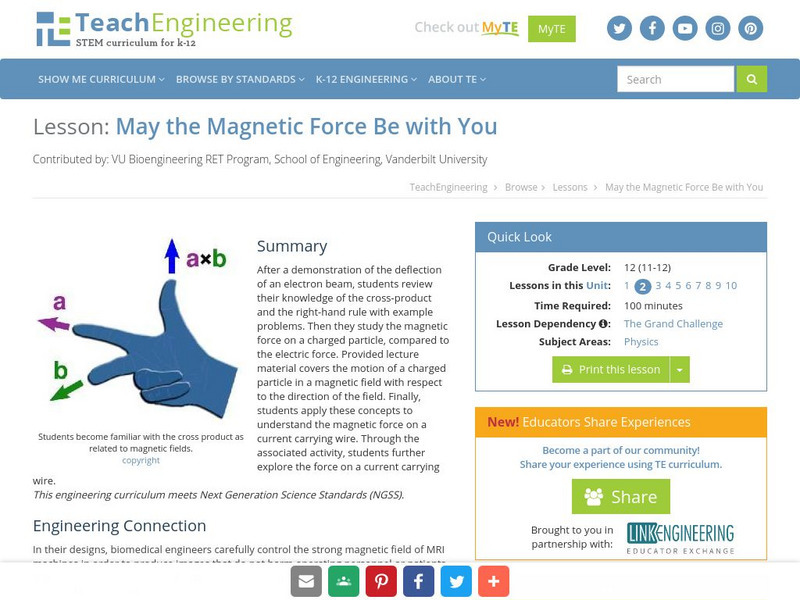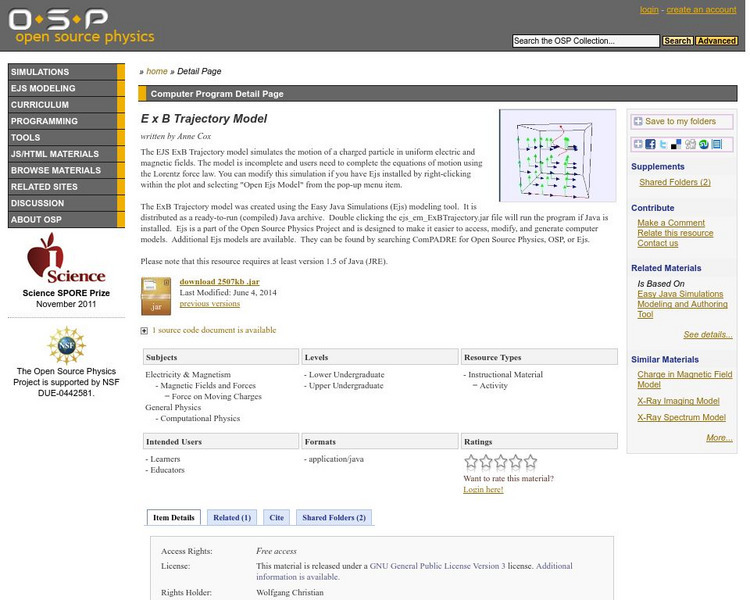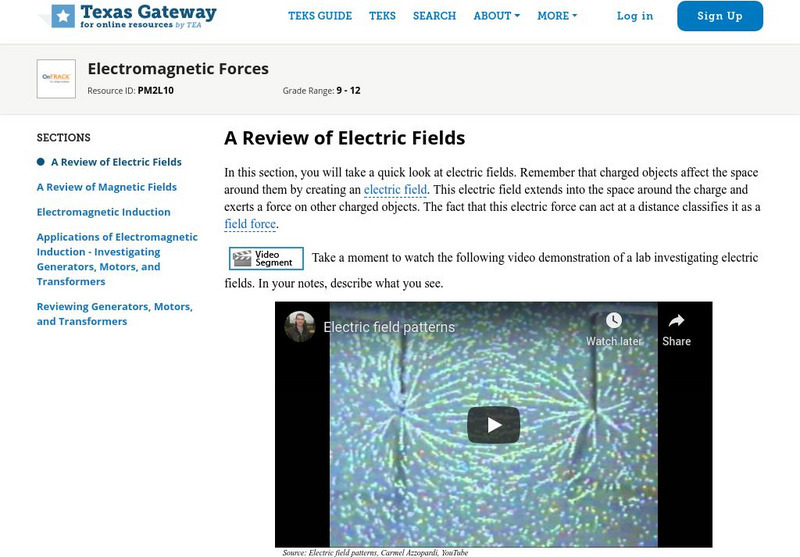National High Magnetic Field Laboratory
Magnet Academy: Wilhelm Weber
Find out more about German physicist Wilhelm Weber, who developed and enhanced a variety of devices for sensitively detecting and measuring magnetic fields and electrical currents.
Exploratorium
Exploratorium: Science Snacks: Magnetic Suction
An experiment to find out how an old-style doorbell works.
Other
Magnet Man: Cool Experiments With Magnets
Here is a lengthy listing of activities and resources pertaining to magnets and magnetism. Experiments which can be performed with many different types of magnets are described; detailed directions and photos are provided.
Florida State University
Florida State University: Magnet Lab: Discovery of Electromagnetism
Two scientists share the credit for discovering, and then interpreting, the phenomenon of electromagnetism.
Other
Quackwatch: Power Lines and Cancer Nothing to Fear
This site explores the history of power lines and cancer associations, as well as dispelling the myth. The science is explored by citing known facts, studies and experts in the field.
TeachEngineering
Teach Engineering: Drawing Magnetic Fields
Students use a compass and a permanent magnet to trace the magnetic field lines produced by the magnet. By positioning the compass in enough spots around the magnet, the overall magnet field will be evident from the collection of arrows...
TeachEngineering
Teach Engineering: May the Magnetic Force Be With You
This lesson begins with a demonstration of the deflection of an electron beam. Learners then review their knowledge of the cross product and the right hand rule with sample problems. After which, students study the magnetic force on a...
US Energy Information Administration
U.s. Eia Energy Kids: Timelines: Electricity
Timeline of key discoveries and uses of electricity.
Mocomi & Anibrain Digital Technologies
Mocomi: What Is Magnetic Field?
Magnets can be used as toys, tools, and more. Identify how magnets work, what a magnetic field is, as well as what a magnetic force is.
Other
Science Toys: Magnetism
This site describes how to make several toys with magnets. It also gives an explanation of how they work and where to get the right kind of magnets.
Science for Kids
Science Kids: Science Quizzes: Electricity Quiz
A ten-question trivia quiz to check general knowledge about electricity.
Mocomi & Anibrain Digital Technologies
Mocomi: Who Discovered Electricity?
It is shocking to find out what electricity is and who discovered it. Explore this brief history of electricity.
Other
Science Playwiths: Electricity and Magnet Playwiths
A relatively easy set of instructions for building a Leyden jar, and an easy-to-understand explanation of how it works.
The Wonder of Science
The Wonder of Science: Ms Ps2 5: Electric, Magnetic, and Gravitational Fields
Work samples, phenomena, assessment templates, and videos that directly address standard: MS-PS2-5: electric, magnetic, and gravitational fields.
Science Buddies
Science Buddies: The Strength of an Electromagnet
Has anyone ever told you that you have a magnetic personality? Have you ever heard that opposites attract? These common phrases are both based on the properties of magnets and magnetic electricity. In this science fair project, learn how...
Florida State University
Florida State University: Inductance
This article surveys inductance and its different forms. It discusses numerous topics associated with inductance such as Faraday's Law, self and mutual inductance, inductors, and magnetic field lines.
Florida State University
Florida State University: The Rutherford Experiment
A simulation of the Rutherford experiment. Includes an animation and an explanation of the history behind the experiment.
National High Magnetic Field Laboratory
Magnet Academy: James Joule
James Prescott Joule experimented with engines, electricity and heat throughout his life. Joule's findings resulted in his development of the mechanical theory of heat and Joule's law, which quantitatively describes the rate at which...
American Association of Physics Teachers
Com Padre Digital Library: Open Source Physics: Charge Trajectories
Investigate a the forces exerted on a charged particle by electric and magnetic fields. Initially, find out how the charge behaves in an electric field. Then, see how the charge behaves in a magnetic field. Finally, initiate both fields...
University of St. Andrews (UK)
University of St. Andrews: James Clerk Maxwell
Research resources for James Maxwell (1831-1879), who did revolutionary work on electricity and magnetism and on the kinetic theory of gases.
American Association of Physics Teachers
Com Padre Digital Library: Open Source Physics: E X B Trajectory Model
Simulate the motion of a charged particle in electric and magnetic fields, and then complete the equations of motion using the Lorentz force law.
Concord Consortium
Concord Consortium: How Electrons Move
Being able to control the movement of electrons is fundamental for making all electronic devices work. Discover how electric and magnetic fields can be used to move electrons around. Begin by exploring the relationship between electric...
Texas Education Agency
Texas Gateway: Electromagnetic Forces
Given schematic diagrams, illustrations or descriptions, students will identify the relationship of electric and magnetic fields in applications such as generators, motors, and transformers.
Other
Fayette County Schools: Frankenstein & Electric Safety
Site contains a science-based literacy activity that explains how to use electricity in a safe manner. A worksheet is provided.




















